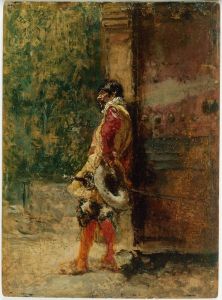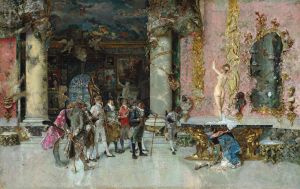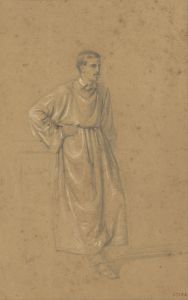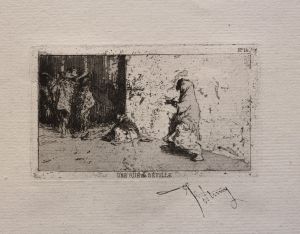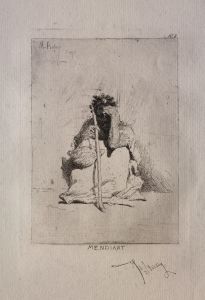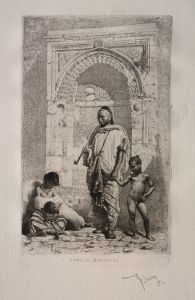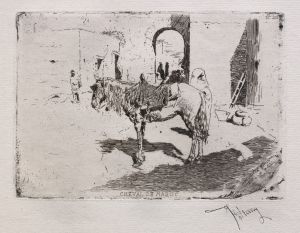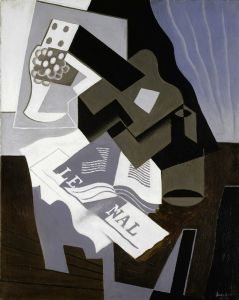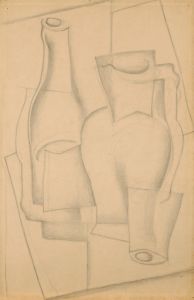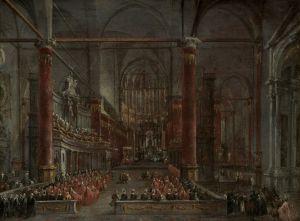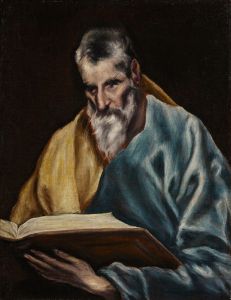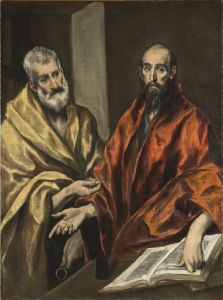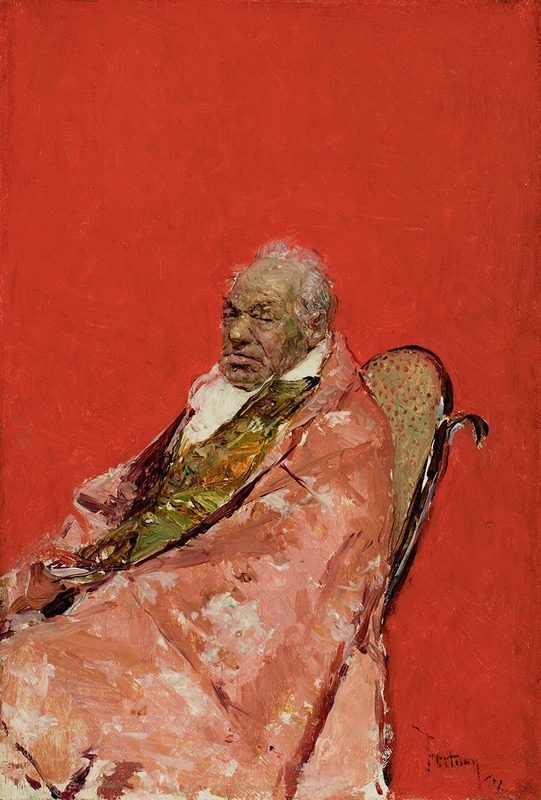
An Ecclesiastic
A hand-painted replica of Mariano Fortuny Marsal’s masterpiece An Ecclesiastic, meticulously crafted by professional artists to capture the true essence of the original. Each piece is created with museum-quality canvas and rare mineral pigments, carefully painted by experienced artists with delicate brushstrokes and rich, layered colors to perfectly recreate the texture of the original artwork. Unlike machine-printed reproductions, this hand-painted version brings the painting to life, infused with the artist’s emotions and skill in every stroke. Whether for personal collection or home decoration, it instantly elevates the artistic atmosphere of any space.
"An Ecclesiastic" is a painting by the Spanish artist Mariano Fortuny Marsal, also known as Marià Fortuny i Marsal. Fortuny was a prominent 19th-century painter, born on June 11, 1838, in Reus, Catalonia, Spain, and he passed away on November 21, 1874, in Rome, Italy. He is renowned for his detailed and vibrant works, which often depicted historical, oriental, and genre scenes.
"An Ecclesiastic" is one of Fortuny's notable works, showcasing his exceptional skill in capturing intricate details and textures. The painting portrays a cleric, likely a high-ranking member of the Catholic Church, dressed in elaborate ecclesiastical robes. The subject is depicted with a sense of dignity and authority, reflecting Fortuny's ability to convey character and status through his art.
Fortuny's meticulous attention to detail is evident in the rendering of the fabric and the ornate decorations of the cleric's attire. The rich colors and the play of light and shadow highlight the luxurious materials and the solemnity of the figure. This level of detail is characteristic of Fortuny's style, which often involved extensive preparatory studies and a deep understanding of his subjects.
The background of the painting is relatively simple, ensuring that the focus remains on the ecclesiastic figure. This compositional choice enhances the subject's prominence and adds to the overall impact of the work. Fortuny's use of light and color creates a sense of depth and realism, drawing the viewer's attention to the intricate details of the cleric's garments and the thoughtful expression on his face.
Mariano Fortuny Marsal's career was marked by his travels and exposure to various artistic influences. He spent significant time in Rome, where he absorbed the classical and Renaissance art traditions. His work also reflects the influence of the Orientalist movement, which was popular in Europe during the 19th century. Fortuny's ability to blend these influences with his unique style contributed to his reputation as one of the leading artists of his time.
"An Ecclesiastic" exemplifies Fortuny's mastery of technique and his keen eye for detail. The painting is a testament to his ability to capture the essence of his subjects, whether they were historical figures, everyday people, or members of the clergy. Fortuny's works continue to be celebrated for their technical brilliance and their ability to convey a sense of life and character.
Mariano Fortuny Marsal's legacy endures through his paintings, which are held in high regard by art historians and collectors alike. "An Ecclesiastic" remains an important example of his work, demonstrating his skill in portraiture and his dedication to capturing the nuances of his subjects.





